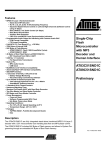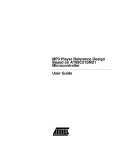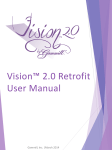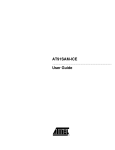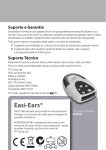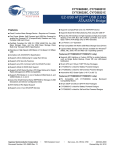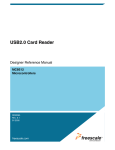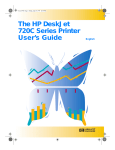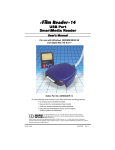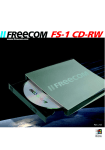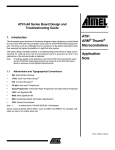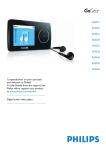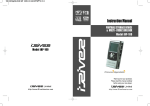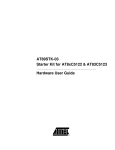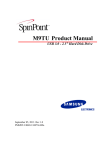Download AT8xC51SND1C Firmware Package User Guide
Transcript
AT8xC51SND1C Firmware Package ............................................................................................. User Guide -2 4209B–MP3–06/03 AT8xC51SND1C Firmware Package User Guide Section 1 Introduction ........................................................................................... 1-1 1.1 1.2 1.3 Document History......................................................................................1-1 References................................................................................................1-1 Abbreviations ............................................................................................1-1 Section 2 Installation............................................................................................. 2-3 2.1 2.2 2.3 2.4 Architecture ...............................................................................................2-3 Firmware Configuration...........................................................................2-10 SBC LibrariesInterface ............................................................................2-12 Mass Storage Drivers..............................................................................2-13 Section 3 Operating Description ......................................................................... 3-15 3.1 3.2 3.3 3.4 3.5 3.6 3.7 3.8 3.9 Firmware Package User Guide Overview .................................................................................................3-15 Keypad Assignment ................................................................................3-15 Firmware Upgrade ..................................................................................3-15 Start-Up...................................................................................................3-15 Mode Selection .......................................................................................3-16 Song Operating Mode .............................................................................3-16 Voice Operating Mode ............................................................................3-19 Tool Operating Mode ..............................................................................3-20 Mass Storage Operating Mode ...............................................................3-22 1 4209B–MP3–06/03 Section 1 Introduction The AT89C51SND1C demonstration firmware is part of the AT8xC51SND1C starter kit. This document is the user’s guide of the AT89C51SND1C demonstration firmware. It is based on the development board V2.1 or V2.2. 1.1 Document History Rev 1.2 References Pages Purpose of Modifications Date A All Document creation based on V1.2.x user’s manual. Support for AT89C51SND1C. Oct. 22, 2002 B All New firmware architecture description May. 28, 2003 n AT8xC51SND1C Datasheet n AT89C51SND1C Errata Sheet n AT8xC51SND1 Development Board User’s Guide 1.3 Abbreviations n MP3: MPEG layer 3 n MMC: MultiMediaCard® n DF: Atmel on-board DataFlash memories n NF: NAND Flash memories n CF: CompactFlash™ memories n USB: Universal Serial Bus n FAT: File Allocation Table n SBC: SCSI Block Command Firmware Package User Guide 1-1 Rev. 4209B–MP3–06/03 -2 4209B–MP3–06/03 Firmware Package User Guide Installation Section 2 Installation The firmware package is delivered in a zip file: snd1c-xxxx-yyy-zzz-A_B_C.zip that extracts in an Atmel\ directory. 2.1 Architecture 2.1.1 Overview Figure 2-1 shows the organization of the Atmel\snd1c-xxxx-yyy-zzz-A_B_C directory. The following sections detail the content of the sub-directories. Figure 2-1. Atmel\snd1c-xxxx-yyy-zzz-A_B_C Directory Organization Atmel\snd1c-xxxx-yyy-zzz-A_B_C\ doc\ lib_mcu\ lib_demod\ or lib_refd\ lib_storage\ modules\ usb_ms_drv\ The project name is defined as follow: snd1c-xxx-yyy-zzz-A_B_C where xxx can be: n “refd” for reference design based project n “demo” for development board based project yyy describes the type of on-board memory used. yyy can be: n “nf” for NAND Flash memory n “df” for Data Flash memory Firmware Package User Guide 2-3 4209B–MP3–06/03 Installation zzz is optional and describes the type of card memory used. zzz can be: n “mmc” for MultiMediaCard memory n “smc” for SmartMedia® Card memory n “sd” for Secure Digital Card memory For IDE/ATAPI projects, such as Hard Disk Drive, Compact Disc Reader or Compact Flash, project tag is snd1c-xxx-ide-A_B_C A_B_C is the version number of the package. A, B and C are digits. – A gives the major revision number. – B gives the minor revision number and a state of the revision: even number = stable version odd number = non stable version (used during developments) – C gives the patch revision number. As shown in Figure 2-2, in addition to subdirectories, the project_tag\ directory contains all the demonstration firmware core files and some important companion files giving information on the demonstration firmware. Please read these files carefully. This directory contains the Keil™ µ-vision2 project files, the executable file in Intel™ “.hex” format, the config.h file. Depending on the demo, more than one “.hex” and µvision2 project files can be found under this directory: Figure 2-2. snd1c-xxxx-yyy-zzz-A_B_C\ File Organization snd1c-xxxx-yyy-zzz-A_B_C\ 2-4 4209B–MP3–06/03 config.h main.c scheduler.c scheduler.h startup.a51 variable.c isp.a51 CHANGES.txt INSTALL.txt LICENSE.txt NEWS.txt README.txt player_xxx.uv2 player_yyy.hex Firmware Package User Guide Installation 2.1.2 usb_ms_drv Directory As shown in Figure 2-3, the win_drv directory contains the Windows 98™ driver for the USB mass storage application. The ‘readme’ files gives some advice on how to install drivers on windows 98 ™ platform and how to mount the removable disk on Linux™ platform. Figure 2-3. usb_ms_drv Directory Organization usb_ms_drv\ 2.1.3 lib_mcu Directory atusbms.zip readme.txt readme_linux.pdf As shown in Figure 2-4, the lib_mcu directory is organized into sub-directories that contain the low-level drivers of the AT89C51SND1C peripherals. The lib_mcu directory also contains the following files: n c51_drv.h: this header file contains macro functions able to configure c51 core features such as clock mode, ERAM size, global interrupt, etc. n compiler.h: this header file contains new type definitions, general purpose constants and macro functions able to get rid of compiler type. n regsnd1.h: this header file contains special function registers and bit definition of the AT8xC51SND1C products. n extsnd1.h: this header file contains mask definitions for special function registers of the AT8xC51SND1C products. Firmware Package User Guide 2-5 4209B–MP3–06/03 Installation Figure 2-4. lib_mcu Directory Organization lib_mcu\ adc\ adc_drv.c adc_drv.h aud\ aud_drv.c aud_drv.h clock\ clock.c clock.h kbd\ kbd_drv.c kbd_drv.h mmc\ mmc_drv.c mmc_drv.h mp3\ mp3_drv.c mp3_drv.h pll\ pll_drv.h spi\ spi_drv.c spi_drv.h timer\ timer_drv.c timer_drv.h usb\ usb_drv.c usb_drv.h wdt\ wdt_drv.h c51_drv.h compiler.h regsnd1.h extsnd1.h 2.1.4 lib_demob Directory As shown in Figure 2-5, the lib_demob directory is organized into sub-directories that contain the low-level drivers of the AT8xC51SND1C development board peripherals. The lib_demob directory also contains the following file: n board.h: this header file contains definitions of the board hardware such as LCD address, On-board Flash chip select ports, etc. Figure 2-5. lib_demob Directory Organization lib_demob\ dac\ dac_drv.h lcd\ lcd_drv.c lcd_drv.h board.h 2.1.5 lib_refd Directory As shown in Figure 2-6, the lib_refd directory is organized into sub-directories that contain the low-level drivers of the AT8xC51SND1C reference design peripherals. The lib_refd directory also contains the following file: n board.h: this header file contains definitions of the reference design hardware such as On-board Flash chip select ports… 2-6 4209B–MP3–06/03 Firmware Package User Guide Installation Figure 2-6. lib_refd Directory Organization lib_refd\ dac\ dac_drv.h board.h 2.1.6 lib_mem Directory As shown in Figure 2-7, the lib_mem directory is organized in sub-directories that contain the high-level drivers of memories or cards that can be connected to the AT8xC51SND1C products. Figure 2-7. lib_mem Directory Organization lib_mem\ df\ df.c df.h mmc\ mmc.c mmc.h nf_1x_521b\ nf.c nf.h nf_drv.c nf_drv.h nf_drv_load.a51 nf_readme.txt xxx\ For NAND Flash based application, some companion files give information on the demonstration firmware (reserved disk space feature or NAND Flash installation for example). NAND flash directories contain also a nf_readme.txt file. Please read these files carefully. MMC driver supports Multiple Block mode operations. If there is no specific define in config.h file, the driver will be configured in Single Block mode. To set the Multiple Block mode operation, add this line in config.h file: #define MMC_CONFIG MMC_MULTI Firmware Package User Guide 2-7 4209B–MP3–06/03 Installation 2.1.7 lib_storage Directory As shown in Figure 2-8, the lib_storage directory contains the libraries for SBC mass storage support. In order to standardize the interfaces and to keep confidentiality on these modules embedded SCSI modules are delivered in library form (source code not delivered). SBC module is composed of the following libraries: n sbc.lib This lib contains the common (not memory dependant) SBC functions. n sbc_df.lib This lib contains the specific SBC functions for DataFlash support. n sbc_mmc.lib This lib contains the specific SBC functions for MultiMediaCard support. n sbc_nf.lib This lib contains the specific SBC functions for NAND Flash support. n sbc_smc.lib This lib contains the specific SBC functions for SmartMediaCard support. n sbc_cf.lib This lib contains the specific SBC functions for CompactFlash support. n sbc_atapi.lib This lib contains the specific SBC functions for ATAPI devices (like CompactDisc Reader) support. n sbc_hdd.lib This lib contains the specific SBC functions for Hard Disk Drive support. n sbc_sd.lib This lib contains the specific SBC functions for SD support. Information on how to interface with those libraries is given in Section 2.3. Figure 2-8. lib_storage Directory Organization lib_storage\ sbc.h sbc.lib sbc_df.lib sbc_mmc.lib sbc_nf.lib sbc_smc.lib sbc_xxx.lib 2.1.7.1 doc Directory 2-8 4209B–MP3–06/03 The \doc directory contains the user’s guide of the firmware in PDF format. Firmware Package User Guide Installation 2.1.7.2 modules Directory As shown in Figure 2-9, the modules directory is organized in sub-directories that contain files such as system header and source files, task header and source file. Figure 2-9. modules Directory Organization modules\ display\ file\ kbd\ kbd_task.c kbd_task.h mass\ usb_task.c usb_task.h sbc.h hard.h mem_task.c mem_task.h mem\ mode\ mode_task.c mode_task.h song\ song_drv.c song_drv.h song_task.c song_task.h tool\ tool_task.c tool_task.h voice_drv.c voice_drv.h voice_task.c voice_task.h voice\ Firmware Package User Guide disp.c disp.h disp_task.c disp_task.h led_task.c (for reference design) led_task.h (for reference design) led.h (for reference design) fat.c fat.h fat32.c fat32.h file.c file.h fs.h fs_readme.txt fs_variable.c iso9660.c iso9660.h fs.h wav.h 2-9 4209B–MP3–06/03 Installation 2.2 Firmware Configuration There are two files that are used to configure the firmware: n the “config.h” located under snd1c-xxxx-yyy-zzz-A_B_C\ directory used to configure the library/drivers as detailed in each driver header files. n the “board.h” located under lib_demob\ directory used to configure the board type between V2.1 or V2.2 and the component information of the board. Note: When working with the starter kit, only the board type has to be configured, component configuration must not be changed. 2.2.1 USB IDs Three IDs are available for configuration by the user in config.h file: n Vendor ID n Product ID n Release Number ID According to USB Organization: “Vendor ID (VID) is owned by the vendor company and is assigned and maintained by the USB-IF only. E-mail [email protected] for more information on USB-IF membership and obtaining a VID”. Atmel allows limited usage of its VID (03EBh) during product development phase. Customer use of the Atmel Vendor ID is not guranteed by Atmel. The customer must use its own Vendor ID for production. 2.2.2 USB Mass Storage Strings Six strings are available for configuration by user in config.h file. Those strings are printed during USB drivers installation and during disk drivers status report in host system: n USB_MANUFACTURER_NAME unicode character string n USB_MN_LENGTH number of unicode character n USB_PRODUCT_NAME at least 12 unicode characters string n USB_PN_LENGTH number of unicode characters n USB_SERIAL_NUMBER at least 12 unicode characters string n USB_SN_LENGTH number of unicode character n SBC_VENDOR_ID 8 ASCII characters string n SBC_PRODUCT_ID 16 ASCII characters string n SBC_REVISION_ID 4 ASCII characters string 2.2.3 File system Demonstration firmware supports 3 different file systems: n FAT12/16 n FAT32 n ISO9660 File system configuration is done in the config.h file. For further information, please read fs_readme.txt file under \modules\files directory. 2-10 4209B–MP3–06/03 Firmware Package User Guide Installation 2.2.4 Memory type Demonstration firmware supports different memory: n MultiMedia Card n SmartMedia Card n Compact Flash n NAND Flash n DataFlash n SD card n Hard Disk Drive n Compact Disk Memory type definition must be set in config.h file. Pin out definition is defined in board.h file. There is two kinds of memory management: n On-board memory n Card memory This allows 3 combinations: n project with on-board memory alone n project with card memory alone n project with both on-board memory and card memory. For example: #define MEM_CHIP_TYPE CHIP_NF #define MEM_CARD_TYPE CARD_MMC This lines will configure memory type as: n NAND Flash for on-board memory. n MultiMedia Card for card memory. Firmware Package User Guide 2-11 4209B–MP3–06/03 Installation 2.3 SBC Libraries Interface SBC module is composed of the following libraries: n sbc.lib: this lib contains the common (not memory dependant) SBC functions. n sbc_df.lib: this lib contains the specific SBC functions for DataFlash support. n sbc_mmc.lib: this lib contains the specific SBC functions for MultiMediaCard support. n sbc_nf.lib: this lib contains the specific SBC functions for NAND Flash support. n sbc_smc.lib: this lib contains the specific SBC functions for SmartMediaCard support. n sbc_atapi.lib: this lib contains the specific SBC functions for ATAPI support. If there is only one memory, don’t add sbc.lib in the project file. n sbc_cf.lib: this lib contains the specific SBC functions for CompactFlash support. n sbc_hdd.lib: this lib contains the specific SBC functions for Hard Disk Drive support. 2.3.1 Global Variables n gl_sbc_wr_busy 1-bit write activity, set to ON by library, must be set to OFF by consuming task (see disp_task.c). n gl_sbc_rd_busy 1-bit read activity, set to ON by library, must be set to OFF by consuming task (see disp_task.c). n gl_sbc_wr_protect 1-bit write protection, set to ON or OFF before calling the library command browser (see usb_task.c). n dCBWDataTransferLength 4-byte unsigned USB variable (declared in usb_task.c). n gl_sbc_vendor_id 8-char table in code space (see Section 2.2.2 for configuration). n gl_sbc_product_id 16-char table in code space (see Section 2.2.2 for configuration). n gl_sbc_revision_id 4-char table in code space (see Section 2.2.2 for configuration). 2.3.2 Internal Library Functions In the following items xxx may represent df, nf, smc, cf… depending on the memory library. n void sbc_xxx_init (void) Memory dedicated SBC support initialization function. n void sbc_command_xxx (void) Memory dedicated SBC support command parser function. 2-12 4209B–MP3–06/03 Firmware Package User Guide Installation 2.3.3 External Library Functions In the following items xxx may represent df, nf, smc, cf… depending on the memory library. n xxx_block_size_0(), xxx_block_size_1(), xxx_block_size_2(), xxx_block_size_3(): 4-byte unsigned block size (byte unit) reported byte by byte. n xxx_disk_size_0(), xxx_disk_size_1(), xxx_disk_size_2(), xxx_disk_size_3(): 4-byte unsigned disk size (block unit) reported byte by byte. n xxx_read_open(void), xxx_read_sector(sector_nb), xxx_read_close(void) functions implemented in memory driver module. n xxx_write_open(void), xxx_write_sector(sector_nb), xxx_write_close(void) functions implemented in memory driver module. n xxx_check_presence() function implemented in removable memory (card) driver module only. 2.4 Mass Storage Drivers 2.4.1 Windows Drivers No specific mass storage driver installation is requested when using Windows 2000™, Windows ME™, and Windows XP™. Each system loads the generic mass storage driver when plugging the development board to the PC. As no generic driver is available under Windows 98SE™ system, Atmel has developed its own mass storage driver to support this operating system. This driver is based on 3 files: atusbms.sys, atusbpdr.pdr and atusbms.inf. Install information is provided in readme.txt file under usb_ms_drv directory. 2.4.2 Linux Drivers Install information for linux is provided in readme_linux.pdf file under usb_ms_drv directory. Firmware Package User Guide 2-13 4209B–MP3–06/03 -14 4209B–MP3–06/03 Firmware Package User Guide Operating Description Section 3 Operating Description 3.1 Overview The following sections describe demo-df-mmc firmware operating modes. Some slight changes may apply for other demonstration firmware (icon, file system type, ...). 3.2 Keypad Assignment Figure 3-1 shows the board’s keypad assignment, one key is left free of functionality for user’s usage. Figure 3-1. Keypad Assignment MODE 3.3 Firmware Upgrade A hidden operating mode is available to upgrade the firmware without using the ISP hardware condition. This mode is entered by pressing simultaneously the grayed key as shown in Figure 3-1 while powering the board or pressing the reset button. The upgrade screen is then displayed to inform user of boot loader execution. Figure 3-2. Firmware Upgrade Screen Firmware Upgrade Firmware can then be upgraded using the generic Atmel FLIP tool. 3.4 Start-Up The AT89C51SND1C firmware starts with a splash screen giving the version(1) of the firmware (see Figure 3-3). This screen is displayed during few seconds but can be skipped by pressing any key. Note: Firmware Package User Guide 1. Version displayed is composed of three digits. Please refer to chapter 2.1.1 for further information 3-15 4209B–MP3–06/03 Operating Description Figure 3-3. Splash Screen AT8x51SND1 DEMO FIRMWARE V3.0.X 3.5 Mode Selection After the set-up phase, the firmware enters the song operating mode. In all operating modes, the mode can be sequentially changed using the “Mode” key with the following order: n Song mode n Voice mode n Tool mode Mass Storage operating mode is entered automatically when connecting the board to the PC through the USB connection. All these operating modes are detailed in the following sections. 3.6 Song Operating Mode This mode is the MP3 song player. It gathers together all the standard features of a portable player. It displays the FAT file names in DOS 8.3 or VFAT long format. Figure 3-4. Display in Song Playing Mode Player Memory Repeat Sound Icon Icon Icon Level Playing Time Lock Status 15 0:00 Song Name.mp3 Player State Song Name 3.6.1 Keypad Functions Table 1 details the functionality of each key depending on the current state. Table 1. Song Mode Key Function Key Description Sound Control Select the volume or bass or medium or treble control. Memory Control (stop state) Make a selection between the on-board FLASH memory, the MMC 1 or the MMC 2 card. Next Song (play state) Play next mp3 file in current directory. Next Selection (stop state) Select next mp3 file or directory in current directory. 3-16 4209B–MP3–06/03 Firmware Package User Guide Operating Description Key Description Previous Song (play state) Play previous mp3 file or directory in current directory. Previous Selection (stop state) Select previous mp3 file or directory in current directory. Play (stop state) Start playing of selected song. Pause (play state) Suspend playing of song. Enter (stop state) Enter the selected directory. MODE Stop (play state) Stop playing of song. Mode (stop state) Exit the song operating mode and go to the voice operating mode. Increase Control Increase global volume. Increase bass volume. Increase medium volume. Increase treble volume. Decrease Control Decrease global volume. Decrease bass volume. Decrease medium volume. Decrease treble volume. Parent Directory (stop state) Go to the parent directory. Repeat (play state) Repeat playing from the beginning after the last song toggle key. Repeat A/B (play state) First press sets A marker, while second press sets B marker and jumps back to A marker. Erase (stop state) Pressing this key for more than 3 seconds removes the selected song file from FAT. Keypad Lock Control Lock or unlock the keypad. 3.6.2 Memory Selection The memory selection is done using the “Memory control” key. On-board memory is selected by default, pressing the “Memory control” key selects sequentially the MMC1 memory, the MMC2 memory then the on-board memory. If present, selected memory is displayed as shown in Table 2. Table 2. Selected Memory Status Icon Description On-Board Memory On-board memory is selected. MMC1 MMC card 1 is selected. Firmware Package User Guide 3-17 4209B–MP3–06/03 Operating Description Icon Description MMC2 MMC card 2 is selected. 3.6.3 Song Player State The player can take 5 different states as detailed in Table 3. Table 3. Song Player States Icon Description SONG MP3 file selected (stop state). DIRECTORY Directory selected (stop state) PLAY Selected song under playing. PAUSE Selected song paused. ERROR Selected memory is not formatted. 3.6.4 Song Name When entering song operating mode or after selecting other memory, the first song or directory of the root directory is displayed. If the name is more than 14 bytes long, it is scrolled on the display from right to left. If the root directory is empty (no MP3 file or no directory) ‘--’ is displayed instead of name. If memory is not formatted, the error state is displayed. Please refer to Section 3.8 to format the memory. 3.6.5 Playing Time During song playing, time is displayed as minute:second. 3.6.6 Sound Control Sound selection is done by pressing the “Sound” key. The level of each selected sound is displayed on the screen. Sound adjustment is performed by pressing the “Increase” or “Decrease” key. 3.6.7 Repeat Modes Two repeat modes are available: n Repeat A/B n Auto Repeat These modes are only selectable during song playing mode. Pressing the “Repeat” key for more than half a second enables or disables the auto repeat feature. Pressing the “Repeat” key once sets the A marker while pressing the “Repeat” key a second time sets the B marker. Then song is played from A to B repeatedly. Repeat modes are signalled to user using a small icon in the first line of the display (see Figure 3-4) and as detailed in Table 4. Table 4. Repeat Mode Status Icon Description Auto Repeat Endless Playing. Repeat A/B A marker is set. 3-18 4209B–MP3–06/03 Firmware Package User Guide Operating Description Icon Description Repeat A/B B marker is set, repeat playing from A to B. 3.6.8 Song Erasing In order to free-up memory for message recording, an erase function has been implemented. Pressing the “Erase” key, for more than 3 seconds, erases the currently selected song. 3.7 Voice Operating Mode This mode is used to store voice messages. Figure 3-5. Display in Voice Operating Mode Voice Memory Icon Icon Volume Level Playing Time Lock Status 2 0:00 VOICEOO1.WAV Player/Recorder State Message Name 3.7.1 File Format Files created are compatible with windows™ pcm wav files and can be played using any media player. File format is mono 8 Khz 8-bit leading to 64 Kbits/s, thus 8 Kbytes of memory per second. 3.7.2 Keypad Functions Table 5 details the functionality of each key depending on the current state. Table 5. Voice Mode Key Function Key Description Next Message Select next voice message in memory. Previous Message Select previous voice message in memory. Play (stop state) Start playing of selected voice message. Pause (play state) Suspend playing of voice message. Pause (record state) Suspend recording of song message. Stop (play state) Stop playing of voice message. MODE Stop (record state) Stop recording of voice message. Mode (stop state) Exit the voice operating mode and go to the tool operating mode. Increase Control Increase volume. Decrease Control Decrease volume. Firmware Package User Guide 3-19 4209B–MP3–06/03 Operating Description Key Description Record (stop state) Start recording of a new voice message. Erase (stop state) Pressing this key for more than 3 seconds removes the selected voice message from FAT. Keypad Lock Control Lock or unlock the keypad. 3.7.3 Message Recording Pressing the “Record” key, creates a new “Voicexxx.wav” file in FAT then sampling is started and message is recorded until the “Stop” key is pressed or end of memory is reached. Up to 255 voice messages can be recorded in FAT. 3.7.4 Message Erasing Pressing the “Erase” key, for more than 3 seconds, erases the currently selected message. 3.7.5 Memory Selection The memory selection is done using the “Memory control” key. On-board memory is selected by default, pressing the “Memory control” key selects sequentially the MMC1 memory, the MMC2 memory then the on-board memory. If present, selected memory is displayed as shown in Table 2. 3.7.6 Message Player/Recorder State The voice player/recorder can take 5 different states as detailed in Table 6. Table 6. Voice Player States Icon Description STOP No message under playing nor recording. PLAY Message is under playing. PAUSE Playing or recording is paused. RECORD Message is under recording. ERROR Selected memory is not formatted. 3.7.7 Message Name When entering voice operating mode or after selecting other memory, the wave file name is displayed. If the root directory of the on-board memory does not contain any “VOICEnnn.WAV” file, ‘--’ is displayed instead of the file name. If memory is not formatted, the error state is displayed. 3.7.8 Playing Time During memo playing, time is displayed as minute:second. 3.7.9 Volume Control A five step volume control is implemented and is adjusted by pressing the “Increase” or “Decrease” key. 3.8 Tool Operating Mode This operating mode is a menu composed of two items. It is used to format the memory with or without voice files. 3-20 4209B–MP3–06/03 Firmware Package User Guide Operating Description Figure 3-6. Display in Tool Operating Mode Tool Icon Memory Icon Lock Status Format... Item Execution State Item Name 3.8.1 Keypad Functions Table 7 details the functionality of each key depending on the current state. Table 7. Tool Mode Key Function Key Description Execute Execute the selected item. MODE Mode Exit the tool operating mode and go to the song operating mode. Keypad Lock Control Lock or unlock the keypad. 3.8.2 Memory Selection The memory selection is done using the “Memory control” key. On-board memory is selected by default, pressing the “Memory control” key selects sequentially the MMC1 memory, the MMC2 memory then the on-board memory. If present, selected memory is displayed as shown in Table 2. 3.8.3 Tool State The tool operating mode can take 2 different states as detailed in Table 8. Table 8. Tool States Icon Description READY Selected function is ready for execution. BUSY Selected function is under execution. 3.8.4 ‘Format’ Item Firmware Package User Guide The ‘format’ function allows memory formatting in FAT12 or FAT16 depending on the memory size. For example, on board DataFlash will be formatted in FAT12 for V2.1 board (16 Mbytes) or FAT16 for board V2.2 (32 Mbytes). This format function is compliant with MMC and SMC recommendations. Using other format specially for NF or SMC may lead to decrease the data transfer rate in mass storage mode. 3-21 4209B–MP3–06/03 Operating Description 3.9 Mass Storage Operating Mode Firmware V3.0.X and later support USB mass storage on the following platforms: n Win98 through Atmel drivers n Win2000(1) (2)/ME/XP n MAC OS(1) V9 and later n Linux Note: 1. These platforms do not provide multi-drive support 2. Service Pack 3 of Win2000 now allows multi-drive support When the development board is plugged to the host through the USB cable, the currently selected operating mode is stopped and the download operating mode is entered (see Figure 3-7). When disconnecting from the host, the song operating mode is automatically selected. Depending on the platform multi-drive support, one or two removable disks automatically appear in the explorer window. Content of the selected memory is then made accessible for read/write operations through the explorer. Figure 3-7. Display in Download Operating Mode USB Icon Memory Icon Write Protect Status Download Indicator 3.9.1 Keypad Functions As soon as development board is connected to the PC, player is not controllable through the keypad until it is unplugged from the PC. 3.9.2 Memory Selection Memory selection is done when entering the download operating mode. On platforms that do not support multi-drive, the selected memory (refer to icon) is: n the MMC if at least one MMC card is present in the stack n the on board memory if no MMC card is present in the stack The selected memory stays selected until USB is unplugged. On platforms that support multi-drive, the selected memory is: n the on board memory on the first mounted drive n the MMC on the second mounted drive When MMC card is removed and plugged again, and depending on the operating system, it may be necessary to press the F5 key to refresh the explorer content. 3.9.3 Write Protection 3-22 4209B–MP3–06/03 If keypad is locked before entering the download operating mode, file write will be forbidden and a message will inform user that the device is write protected in case of attempted file write. Due to SCSI mass storage implementation, write protection must be set prior to connecting the device to USB. Any change of the lock key during connection will have no effect. Firmware Package User Guide Operating Description 3.9.4 Download State The download or upload activity is signalled to user by blinking the download indicator. Do not unplug the player while this indicator is blinking, this may result in file system corruption and may request new formatting of the memory. Table 9. Download States Icon Description Busy Host is writing a file to memory. Host is reading a file from memory. Firmware Package User Guide 3-23 4209B–MP3–06/03 Atmel Corporation 2325 Orchard Parkway San Jose, CA 95131 Tel: 1(408) 441-0311 Fax: 1(408) 487-2600 Regional Headquarters Europe Atmel Sarl Route des Arsenaux 41 Case Postale 80 CH-1705 Fribourg Switzerland Tel: (41) 26-426-5555 Fax: (41) 26-426-5500 Asia Room 1219 Chinachem Golden Plaza 77 Mody Road Tsimshatsui East Kowloon Hong Kong Tel: (852) 2721-9778 Fax: (852) 2722-1369 Japan 9F, Tonetsu Shinkawa Bldg. 1-24-8 Shinkawa Chuo-ku, Tokyo 104-0033 Japan Tel: (81) 3-3523-3551 Fax: (81) 3-3523-7581 Atmel Operations Memory 2325 Orchard Parkway San Jose, CA 95131 Tel: 1(408) 441-0311 Fax: 1(408) 436-4314 RF/Automotive Theresienstrasse 2 Postfach 3535 74025 Heilbronn, Germany Tel: (49) 71-31-67-0 Fax: (49) 71-31-67-2340 Microcontrollers 2325 Orchard Parkway San Jose, CA 95131 Tel: 1(408) 441-0311 Fax: 1(408) 436-4314 La Chantrerie BP 70602 44306 Nantes Cedex 3, France Tel: (33) 2-40-18-18-18 Fax: (33) 2-40-18-19-60 ASIC/ASSP/Smart Cards 1150 East Cheyenne Mtn. Blvd. Colorado Springs, CO 80906 Tel: 1(719) 576-3300 Fax: 1(719) 540-1759 Biometrics/Imaging/Hi-Rel MPU/ High Speed Converters/RF Datacom Avenue de Rochepleine BP 123 38521 Saint-Egreve Cedex, France Tel: (33) 4-76-58-30-00 Fax: (33) 4-76-58-34-80 Zone Industrielle 13106 Rousset Cedex, France Tel: (33) 4-42-53-60-00 Fax: (33) 4-42-53-60-01 1150 East Cheyenne Mtn. Blvd. Colorado Springs, CO 80906 Tel: 1(719) 576-3300 Fax: 1(719) 540-1759 Scottish Enterprise Technology Park Maxwell Building East Kilbride G75 0QR, Scotland Tel: (44) 1355-803-000 Fax: (44) 1355-242-743 e-mail [email protected] Web Site http://www.atmel.com Disclaimer: Atmel Corporation makes no warranty for the use of its products, other than those expressly contained in the Company’s standard warranty which is detailed in Atmel’s Terms and Conditions located on the Company’s web site. The Company assumes no responsibility for any errors which may appear in this document, reserves the right to change devices or specifications detailed herein at any time without notice, and does not make any commitment to update the information contained herein. No licenses to patents or other intellectual property of Atmel are granted by the Company in connection with the sale of Atmel products, expressly or by implication. Atmel’s products are not authorized for use as critical components in life support devices or systems. © Atmel Corporation 2003. All rights reserved. Atmel© is a registered trademark of Atmel Corporation. DataFlash ™ is a trademark of Atmel Corporaion. Windows98 ™, WindowsXP ™, Windows2000 ™, and Windows98SE™ are trademarks of Microsoft Corporation. Linux™ is a trademark of Linus Torvalds. Intel ™ is a trademark of Intel Corporation. CompactFlash ™ is a trademark of CompactFlash Association. SmartMedia ® is a registered trademark of Toshiba Corporation. Other terms and product names in this document may be trademarks of others. Printed on recycled paper.




























